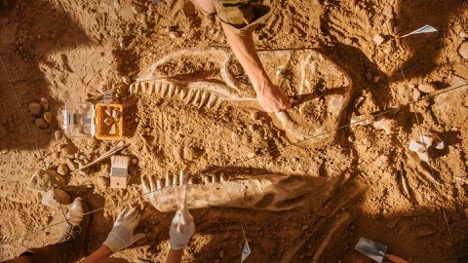“The fact that osteosarcoma has been around since the age of the dinosaurs should tell us something. This is a complex cancer that deserves our attention and expertise to finally find a cure.”
Lee Helman, MD, OSI Director
In 2020, for the first time ever, new research led to the discovery of osteosarcoma in a dinosaur fossil. The advanced bone cancer was found in a 77-million-year-old dinosaur specimen and, according to researchers, it is the earliest identified hominin cancer.
“What they found was remarkable,” says OSI Director Lee Helman, MD. “The collaborative effort across multiple scientific disciplines it took to make this discovery is nothing short of amazing.”
This evidence of cancer in dinosaurs was referenced in a perspective article on osteosarcoma titled, “New Horizons in the Treatment of Osteosarcoma,” which was published in November 2021 in the New England Journal of Medicine and co-authored by Dr. Helman and Paul Meltzer, MD, PhD, chief of the Genetics Branch of the National Cancer Institute.
How was it found?
The advanced cancer was found in the lower leg bone (fibula) of a Centrosaurus apertus, a plant-eating, horned dinosaur that lived about 75 to 77 million years ago. The fossil was originally discovered in Alberta, Canada in 1989. Because of its unusual malformation, scientists simply believed that it was due to a fracture that had healed. However, further inquiry in 2017 led to a closer look at the dinosaur bone.
A multidisciplinary team of specialists and medical professionals — from pathology, radiology, and orthopedic surgery to palaeopathology — came together to investigate the fossil. Using modern medical tools and techniques, the team re-evaluated the bone, approaching it as if they were diagnosing a tumor in a human patient.
It was a rigorous process: High-resolution computed tomography (CT) scans made it possible to get a more detailed view of the tumor and powerful 3-D CT reconstruction tools were used to understand how the cancer likely progressed through the dinosaur’s bone.
“The fact that osteosarcoma has been around since the age of the dinosaurs should tell us something,” says Dr. Helman. “This is a complex cancer that deserves our attention and expertise to finally find a cure.”

A cancer that remains elusive
Even though it is the most common malignant bone tumor and the earliest identified hominin cancer, osteosarcoma has remained elusive when it comes to improving outcomes. Each year, approximately 1,000 people are diagnosed with osteosarcoma in the United States.
This rare form of bone cancer mostly occurs in children and young adults, often with a swiftness that is devastating. In localized cases where the cancer does not spread, the 5-year survival rate is about 65%. But in metastatic cases, where the cancer has spread to other organs, the survival rate plummets to around 20%.
Osteosarcoma outcomes have not improved in over 35 years. One reason is that osteosarcoma is characterized by complex mutational patterns and genome rearrangements that are often found sub-sets of patients. Here at the Osteosarcoma Institute, we are determined to overcome these challenges . And the time for progress is now.
What this dinosaur discovery means for osteosarcoma treatment
Thanks to whole-genome sequencing, mapping of highly complicated tumors, and the recent discovery of osteosarcoma in a dinosaur fossil, we are now able to understand osteosarcoma in ways that were not previously possible.
“We believe that these recent advances,” says Dr. Helman, “are at last bringing us to an inflection point in the trajectory of translational and clinical osteosarcoma research that will lead to continued improvements in survival.”
For example, we must identify genetic drivers, patient biomarkers and other tumor characteristics that could influence successful therapies. We must consider immunotherapy options in addition to chemotherapy drugs, perhaps even combining the two for greater impact. Precision medicine, a personalized approach to treating disease, is a critical component as well that will require strong collaborative efforts in such a rare disease.
There is reason to hope. New strategies for clinical trials and novel drug combinations are currently underway. Advanced DNA sequencing, immunotherapy approaches and using specific biomarkers in clinical trials all point to the fact that we are on the cusp of change. The OSI, for one, will not stop until there is a cure.
Read more stories about the people powering OSI in The Frontline, our monthly newsletter. Click here to subscribe.
